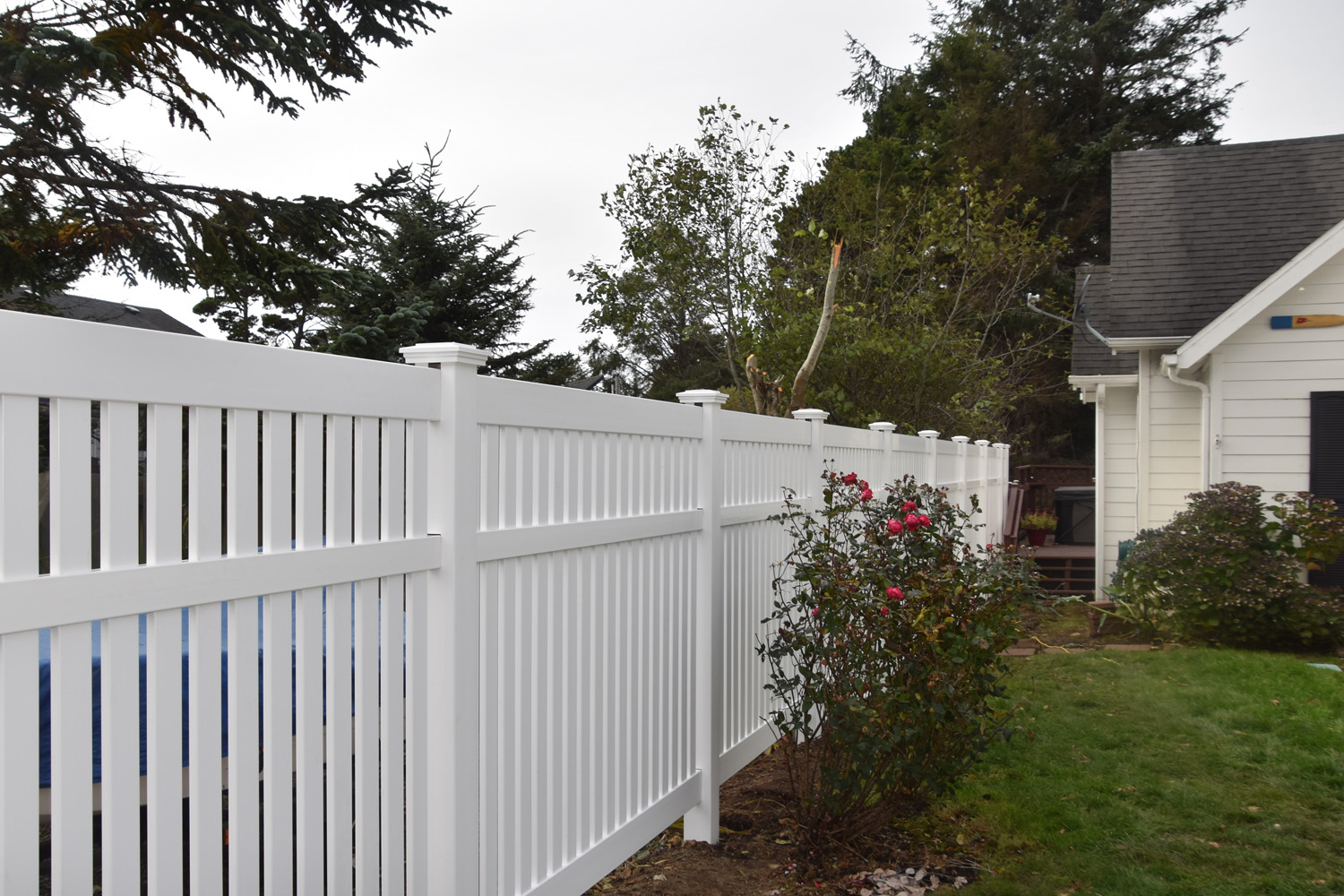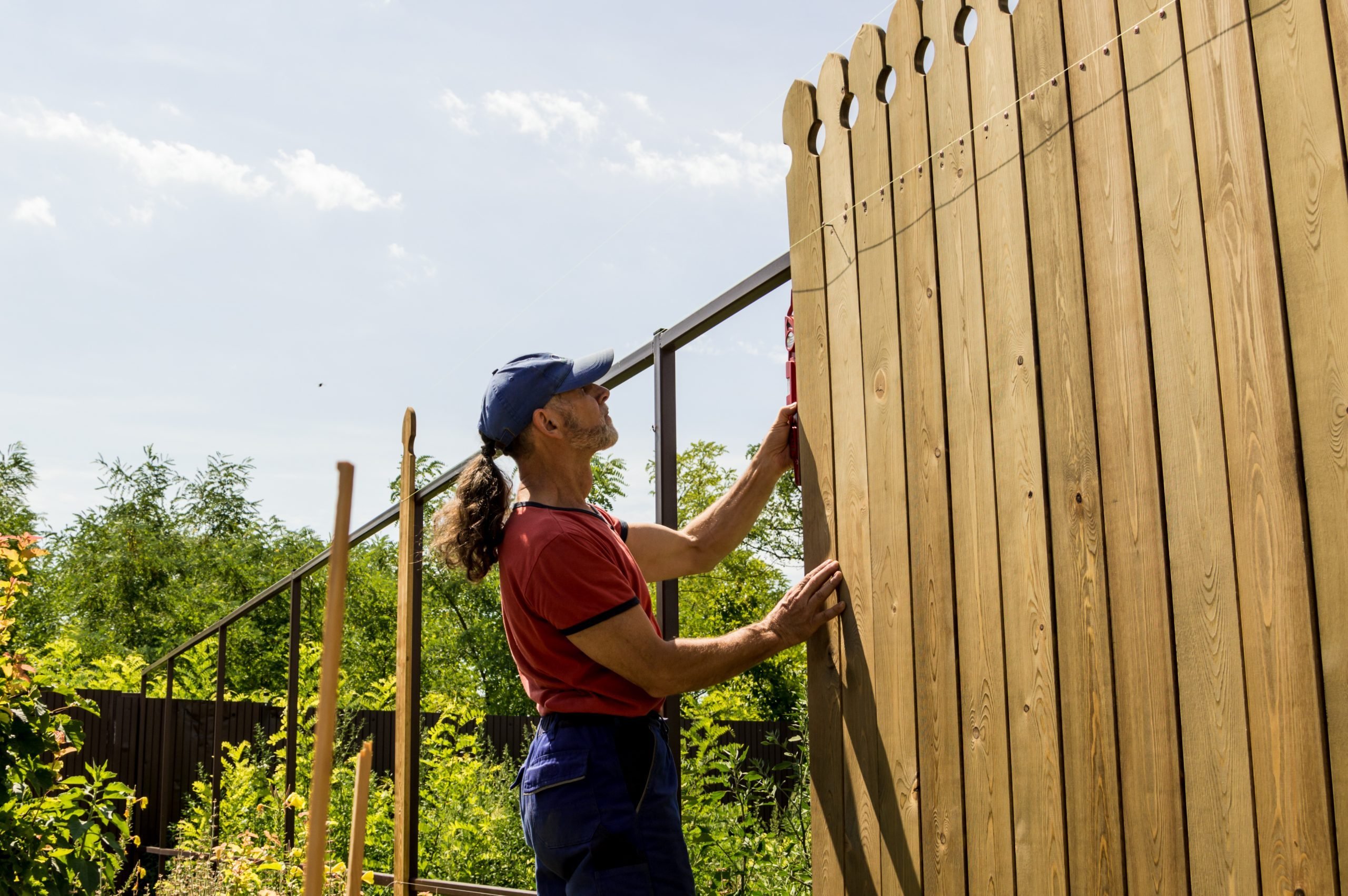Reasons You Need Immediate Fence Repair Before Damage Gets Worse
Wiki Article
Just How to Recognize Usual Problems That Call For Immediate Fencing Repair Work
It is essential to identify concerns prior to they end up being bigger troubles when it comes to preserving your fencing. Regularly looking for indicators of rotting wood, leaning panels, or corrosion can conserve you time and cash in the future. You might not understand just how climate and pests can endanger your fence's integrity. Allow's discover the typical indicators that suggest your fencing needs prompt focus, so you can maintain your building protected and looking its finest.Indicators of Rotting Wood in Wooden Fences
Have you noticed your wood fencing looking a little bit even worse for wear? If so, it could be time to look for indicators of rotting timber. First, analyze the base of the messages and panels for soft places. That's a clear indication of rot if you press on the wood and it feels mushy or falls apart. Next, search for discoloration or dark spots on the timber-- these often signal moisture damage. Take note of any kind of peeling off paint or finish, as this can reveal the wood to more decay. Furthermore, a pungent, mildewy smell can suggest fungal development. Do not neglect to examine links and joints; if they're loosened or breaking down, the wood under is likely endangered. By capturing these indications early, you can protect against extra considerable damage and maintain your fence standing strong. Normal maintenance is crucial to expanding the life of your wood fence.Leaning or Tilting Fencing Panels
It's vital to comprehend what caused it if you've discovered your fence panels tilting or leaning. This concern may indicate underlying structural damages that needs your attention. Let's discover the common reasons and the repair choices readily available to obtain your fencing back in shape.
Reasons For Leaning Panels
It's typically an indication of underlying concerns that require attending to when you observe your fence panels tilting or leaning. One common cause is insufficient drainage; too much water can erode the dirt around the fencing messages, compromising their support. One more wrongdoer might be solid winds or storms that push versus the panels, especially if they're not correctly anchored. In addition, the natural settling of soil with time can cause articles to shift, leading to a tilt. Pests, like termites, can endanger the honesty of wooden panels, causing them to lean as well. Finally, inadequate installation practices might cause panels not being securely established, leaving them prone to leaning under stress. Address these problems immediately to preserve your fence's integrity.
Indications of Structural Damage
Observing tilting or leaning fence panels can be worrying, as these issues usually suggest structural damage that needs prompt interest. When your fence starts to lean, it might signal that the blog posts are changing or that the dirt around them has worn down. Pay very close attention to spaces between panels or messages, as these can additionally recommend instability. deck builder. Furthermore, check for fractures or splintering in the wood, which can weaken the overall structure. It can endanger the stability of the fence if you discover rust or rust on metal components. Keep in mind, ignoring these signs can result in much more extreme damage down the line, so it's necessary to assess the circumstance immediately and take action prior to it intensifiesRepair Service Options Available

Corrosion and Rust in Steel Fences
If you own a metal fence, you might observe rust and deterioration slipping in in time, particularly if it's subjected to wetness. These problems not just influence the look of your fence but can also compromise its structural stability. To determine corrosion, seek reddish-brown spots or patches, which show the steel is oxidizing. Corrosion can spread out swiftly if left untreated, leading and compromising the fencing to costly repairs.To take on rust and corrosion, you need to clean the influenced locations with a wire brush and use a rust-inhibiting guide. As soon as the guide dries, take into consideration painting the fencing with a weather-resistant paint to safeguard it further. Regular maintenance, such as checking for signs of rust and touching up paint as required, will help prolong your fencing's life expectancy. Resolving these issues without delay ensures your metal fence remains solid and visually appealing for many years ahead.Fractures and Divides in Plastic Secure Fencing

Causes of Plastic Damages
Plastic fencing is prominent for its toughness, yet it can still struggle with splits and splits because of numerous aspects. One major cause is severe temperature fluctuations. It can weaken the material over time when vinyl expands in the warm and agreements in the chilly. Additionally, exposure to harsh sunlight can result in UV degradation, making the plastic breakable. Physical impacts, like accidental collisions or heavy branches, can also develop splits. Poor installation or using low-quality products can intensify these issues. Age plays a role; older plastic secure fencing is a lot more at risk to damages. Routine assessments can aid you recognize these factors prior to they bring about significant troubles. Take positive steps to assure your fencing stays intact and solid.Fixing Cracks Successfully
Although fractures and splits in your vinyl fencing can be concerning, resolving them without delay can prevent more damage and keep the fence's look. Analyze the size of the split. For little splits, a vinyl repair work package frequently includes sticky that can bond the sides, giving a smooth fix. Tidy the location thoroughly before applying the glue, guaranteeing it sticks properly. For bigger divides, you may require to utilize a vinyl spot. Cut the patch to dimension, use glue around the edges, and press it strongly onto the split. Enable it to treat according to the maker's guidelines. Normal upkeep and fast fixings can expand your fencing's life-span, keeping it looking great for years to find.Loose or Missing Out On Fencing Articles
Loose or missing fence blog posts can threaten the stability of your whole fencing structure. If you see any type of articles tottering or leaning, it's important to resolve the issue promptly. Inspect for any indicators of activity, as this can cause additional damages with time. You can easily examine the problem by giving each article a gentle shake-- if it really feels unsteady, it's time to take action.For missing messages, you'll need to replace them immediately to preserve your fence's honesty. When you mount brand-new blog posts, ensure they're safely anchored in the ground with concrete or crushed rock for added security. If an article hangs, tighten it by including extra support or driving it deeper into the ground.Ignoring these concerns can result in bigger problems, like voids in your fencing or also complete collapse. So, keep an eye on your posts and stay positive about repair work!Damages From Weather and Natural Environment
Climate and all-natural elements can damage your fencing, bring about various forms of damage that need prompt focus. Hefty rain can create wood to rot, making it unstable and weak. Snow accumulation may bend or damage panels, while strong winds can uproot fencing articles or cause sections to lean.If you observe cracks or splintering in wooden fencings, it's an indication of drying because of extreme sun direct exposure. Steel fences can corrosion if fence repair protective finishes put on off, particularly in damp or seaside areas.Inspect your fencing on a regular basis after tornados or extreme climate to capture any type of damages early. Dealing with these issues swiftly can save you from pricey repairs down the line. Don't wait up until a small issue develops into a major one; stay positive and maintain your fence leading shape to preserve both capability and curb appeal.Pest Infestation and Termite Damages
When you discover indicators of bug infestation or termite damages, it's vital to act quickly to stop further damage. Look for mud tubes along your fence or hollow-sounding timber, as these indicate termites are at work. You could also see little holes or frass, which is termite droppings looking like sawdust. If you identify any of these signs, it's time to analyze the damage.Don' t delay up until it's far too late; parasites can compromise your fencing's honesty. Examine the surrounding area for beetles or ants, as they might be adding to the issue. If you think an invasion, take into consideration getting in touch with a parasite control expert to deal with the issue.repairing and verify or changing afflicted sections of your fencing immediately not only restores its strength however additionally protects against parasites from spreading further. Keep vigilant to maintain your building pest-free and secure.Often Asked Questions
Just how Often Should I Evaluate My Fencing for Damages?
You must examine your fence a minimum of two times a year, ideally throughout spring and autumn. Regular checks help you detect damage early, conserving you money and time on repairs while keeping your home's appearance and safety.Can I Repair a Fencing Myself or Work With an Expert?
You can most definitely fix a fencing on your own if you have the right devices and abilities. Working with a professional warranties quality work and conserves you time, particularly for complex repairs or comprehensive damage.What Tools Are Needed for Fundamental Fencing Repair Services?
For fundamental fencing fixings, you'll need devices like a hammer, screwdriver, pliers, a saw, a degree, and determining tape. deck builder. Depending on the repair service, you might likewise call for nails, screws, or replacement boardsJust How Much Does Fence Fixing Typically Expense?
Fencing fixing costs vary commonly, yet you can expect to pay between $200 and $1,500 relying on products, labor, and level of damage. It's wise to obtain several quotes for the very best deal.
When Is the very best Season for Fencing Services?
The best time for fence fixings is throughout moderate weather condition, commonly in spring or very early fall. You'll stay clear of severe temperatures, making it less complicated to function and making certain the materials set correctly for lasting toughness (deck builder). Noticing leaning or turning fencing panels can be worrying, as these issues commonly show structural damages that needs instant interest. Loose or missing fence articles can threaten the security of your whole fence structure. Snow buildup might bend or damage panels, while solid winds can root out fence blog posts or cause areas to lean.If you notice splits or splintering in wood fences, it's an indication of drying out due to extreme sun direct exposure. Steel fences can rust if safety coverings use off, specifically in moist or coastal areas.Inspect your fence on a regular basis after tornados or severe climate to capture any kind of damages early. Fencing repair service expenses vary widely, however you can anticipate to pay between $200 and $1,500 depending on materials, labor, and level of damageReport this wiki page